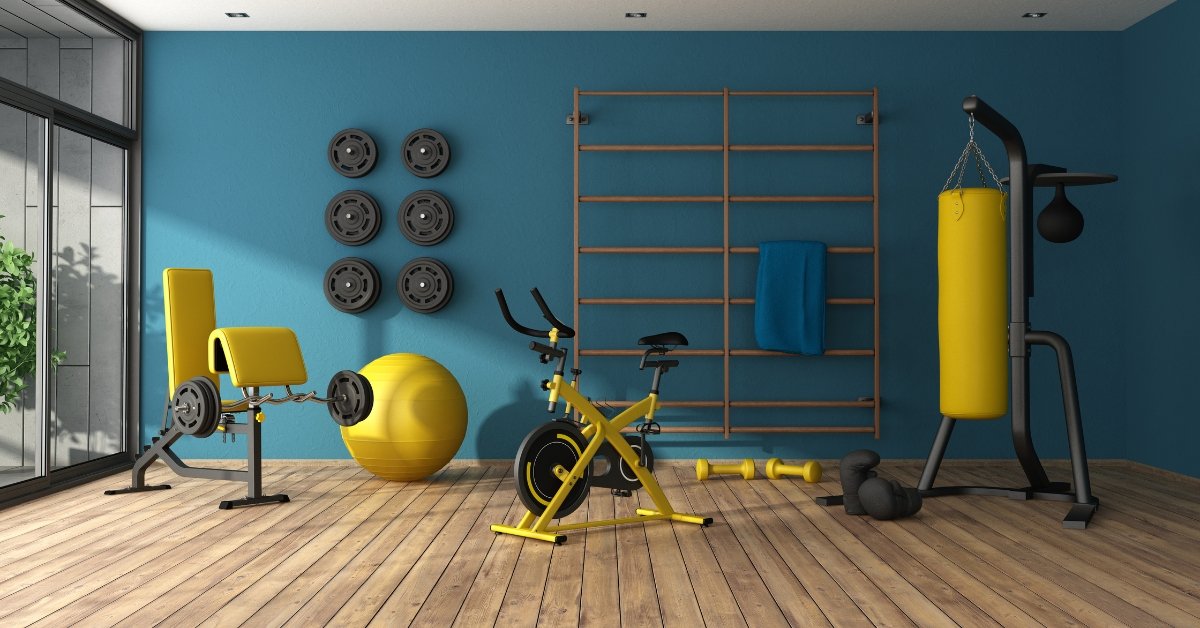Table Of Contents
Introduction: A Gym That Fits Your Budget And Lifestyle
Are you dreaming of a home gym but worried about the cost?
You are not alone!
Gym memberships and fancy equipment can drain your wallet, but fitness does not have to be expensive.
Inspired by Hudson White of B.U.F.F. Dudes fame, this blog post shows you how to build a fully functional home gym using scrap metal for just $100.
Whether you are a beginner or a seasoned lifter, this DIY approach is affordable, sustainable, and tailored to your space.
We will walk you through creating a barbell, weights, a bench, and a squat rack— all with simplicity and clarity in mind.
Ready to get started?
Let us dive in!
Why Scrap Metal? The Smart, Sustainable Choice
Scrap metal is everywhere, think old pipes, car parts, or construction leftovers.
It is often free or dirt-cheap, making it perfect for a budget home gym.
Repurposing metal keeps it out of landfills, giving you a win for your wallet and the planet.
Hudson White and his brothers, Brandon and Duke, popularized this idea by crafting rugged gym gear from junkyard finds.
Their approach proves you do not need a big budget to build strength—just a little creativity and elbow grease.
For this project, you can source scrap metal for free (more soon) and use your $100 for extras like bolts or padding.
You are set if you have essential tools like a saw and drill.
If not, borrow them to stay on budget. Let us break it down step-by-step.
Step 1: Crafting Your Barbell Like A Pro
Every gym needs a barbell—it is the backbone of strength training.
Start by finding a sturdy metal bar about 7 feet long, mimicking a standard 45-pound Olympic bar.
Check scrap yards and old machinery, or even ask a neighbor with a garage full of junk.
Hudson White once used a rusted metal rod, proving that looks do not matter if it is solid.
Next, add weights. Scrounge up metal plates, disks, or even tractor wheels (a B.U.F.F. dude’s favorite).
Secure them with bolts or clamps—spend about $10 here if you need to buy them.
Balance is key, so match weights on both sides.
Tip: Clean any rust with a wire brush to avoid scratches or tetanus. Your barbell is now ready for deadlifts, presses, and more!
Step 2: Making Weights That Work For You
Weights let you grow stronger over time, and scrap metal is a goldmine for this—Hunt for heavy pieces like old tools, car parts, or construction scraps.
Use a bathroom scale to weigh them, then mark each one—say, “10 lbs” or “25 lbs”—with paint or a marker.
Aim for various sizes (2.5 to 45 pounds) to suit different exercises.
If you have a grinder, shape the scrap into plates for easier stacking, but rough chunks work fine, too.
Hudson’s crew once used mismatched metal bits, proving function beats form.
Spend nothing here if your scrap is free, keeping your $100 intact for other steps.
Step 3: Building A Sturdy Bench
A bench opens up exercises like bench presses and rows.
Grab four metal pipes or bars from your scrap pile for the frame.
Weld or bolt them into a rectangle—about 6 feet long and 2 feet wide—with legs for support.
No welder?
Bolts work just as well; grab a $10 pack from the hardware store.
For the top, use a piece of wood or an old cushion.
Add foam padding (around $20) for comfort, and screw it down securely.
Test it with your body weight first—no wobbles allowed!
Hudson’s team once repurposed a car seat, but a simple padded board does the trick.
Now you have got a cozy spot to lift.
Step 4: Assembling A Squat Rack
Squats and overhead presses require a squat rack, which is easier than it sounds.
Find four tall metal pipes for uprights—taller than you, with room for the barbell.
Connect them with crossbars at the top and bottom using bolts or clamps (another $10 or so).
Add adjustable pegs or hooks—scrap metal stubs work—to hold the bar at different heights.
Test it by pushing on it; if it sways, reinforce it.
Hudson White welded a roll cage into a rack, but you can keep it simple with sturdy connections.
This rack will keep you safe and strong for years.
Safety First: Tips To Lift With Confidence
DIY gyms are fantastic, but safety is non-negotiable.
Wear gloves and safety glasses when handling metal—rusty edges can bite.
Secure every bolt and clamp tight, and check your gear weekly for wear.
Start with light weights to test everything, then ramp up.
Hudson’s crew warns about tetanus from rusted scrap, so scrub it clean before use.
If you are new to DIY, ask a handy friend for help.
Better safe than sorry!
Budget Breakdown: Staying Under $100
Here is how it adds up:
- Barbell: $30 (metal bar or clamps if needed)
- Weights: $0 (all scrap)
- Bench: $30 (padding and screws)
- Squat Rack: $10 (bolts and connectors)
- Total: $70–$100
Source scrap metal for free from junkyards, online marketplaces, or friends.
Your $100 covers the rest, leaving wiggle room for surprises. Smart shopping keeps you on track!
Trivia: Fun Fact To Flex Your Knowledge
Did you know scrap metal recycling saves enough energy yearly to power 18 million homes? Building your gym this way, you are flexing your muscles and helping the environment!
Conclusion: Your Gym, Your Way
There you have it—a budget home gym with scrap metal for $100, inspired by Hudson White’s DIY spirit.
You have a barbell, weights, bench, and squat rack, all custom-made to fit your life.
It is affordable, fun, and proof that fitness does not need a price tag.
Try it, stay safe, and enjoy your new workout haven.
We loved this guide.
Check out our other articles for more DIY fitness hacks and tips to improve your routine.
Happy lifting!






